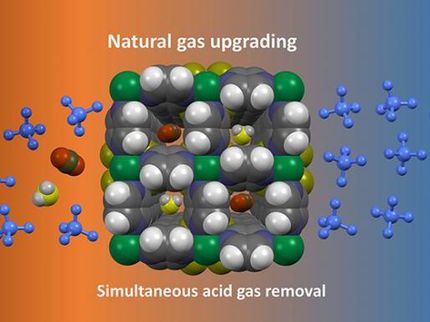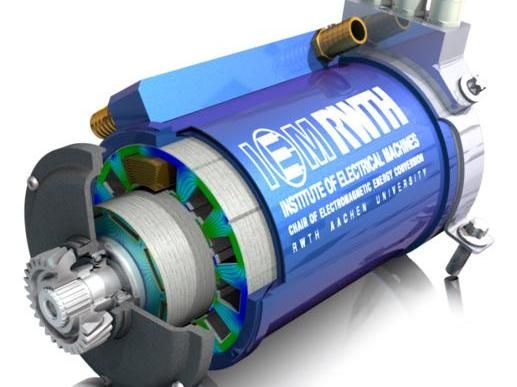Mimicking a sweet solution to mop up pollution
A fast and safe method to prepare a 3D porous material that mimics the shape of a honeycomb could have broad applications from catalysis to drug delivery or for filtering air to remove pollutants or viruses.
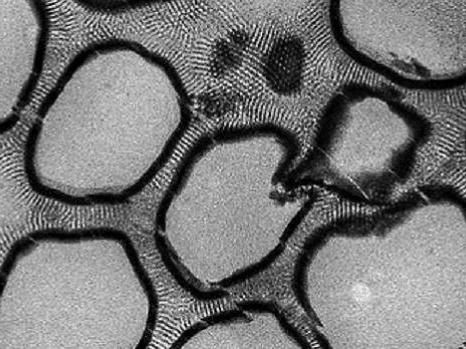
A transmission electron microscopy (TEM) image shows that the spherical compartments are interconnected through nanochannels.
S. Nunes
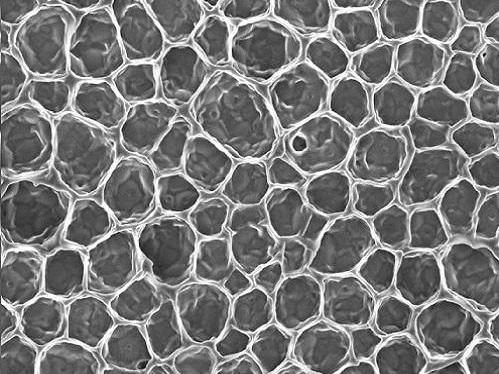
The repeating regular hierarchical structures are shown by scanning electron microscopy (SEM) images that illustrate how the honeycomb structure has formed at the surface of the material.
S. Nunes
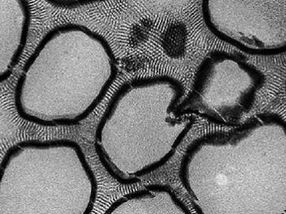
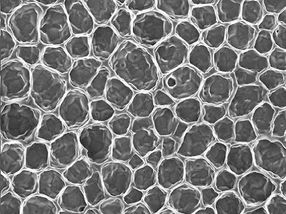
Both the lattice of a honeycomb and the symmetry of a diatom are complex living structures comprising patterns and shapes that have long provided inspiration for scientists. One recent application is to develop artificial hierarchical porous materials that are stable, yet have a large surface area and the ability to selectively extract materials. It has been difficult however to build these structures at the nanoscale due to their complexity and pattern repeatability across scales from the individual compartments to the whole structure.
A team from KAUST, led by Suzana Nunes, has proposed a simple method that, in just five minutes, can produce a flexible film with a complex hierarchical structure that has repeating patterns of interconnected, regularly shaped pores.
With experts in the Imaging and Characterization Core Lab, the team used the block copolymer called polystyrene-b-poly(tertbutyl acrylate) (PS-b-PtBA) to demonstrate this method. They tested various concentrations of PS-b-PtBA with different solvent mixtures, cast the resulting solutions on glass plates and evaporated them for different time periods to promote the nucleation and growth of cavities with highly porous interconnecting walls. The resulting film was then immersed in water to rinse off the solvent and halt the phase separation.
"By using this method we create an important platform to design artificial porous materials that replicate highly ordered porous and complex systems mimicking nature," explains research scientist and lead author Stefan Chisca. "These have potential use for separations, such as virus filtration, and for biological scaffolds, such as those used for bone regeneration."
Original publication
Chisca, Stefan and Musteata, Valentina-Elena and Sougrat, Rachid and Behzad, Ali Reza and Nunes, Suzana P.; "Artificial 3D hierarchical and isotropic porous polymeric materials"; Science Advances; 2018
Most read news
Original publication
Chisca, Stefan and Musteata, Valentina-Elena and Sougrat, Rachid and Behzad, Ali Reza and Nunes, Suzana P.; "Artificial 3D hierarchical and isotropic porous polymeric materials"; Science Advances; 2018
Topics
Organizations
Other news from the department science
These products might interest you

Eclipse by Wyatt Technology
FFF-MALS system for separation and characterization of macromolecules and nanoparticles
The latest and most innovative FFF system designed for highest usability, robustness and data quality

Spinsolve Benchtop NMR by Magritek
Spinsolve Benchtop NMR
Spinsolve is a revolutionary multinuclear NMR spectrometer that provides the best performance

HYPERION II by Bruker
FT-IR and IR laser imaging (QCL) microscope for research and development
Analyze macroscopic samples with microscopic resolution (5 µm) in seconds

Get the chemical industry in your inbox
By submitting this form you agree that LUMITOS AG will send you the newsletter(s) selected above by email. Your data will not be passed on to third parties. Your data will be stored and processed in accordance with our data protection regulations. LUMITOS may contact you by email for the purpose of advertising or market and opinion surveys. You can revoke your consent at any time without giving reasons to LUMITOS AG, Ernst-Augustin-Str. 2, 12489 Berlin, Germany or by e-mail at revoke@lumitos.com with effect for the future. In addition, each email contains a link to unsubscribe from the corresponding newsletter.
